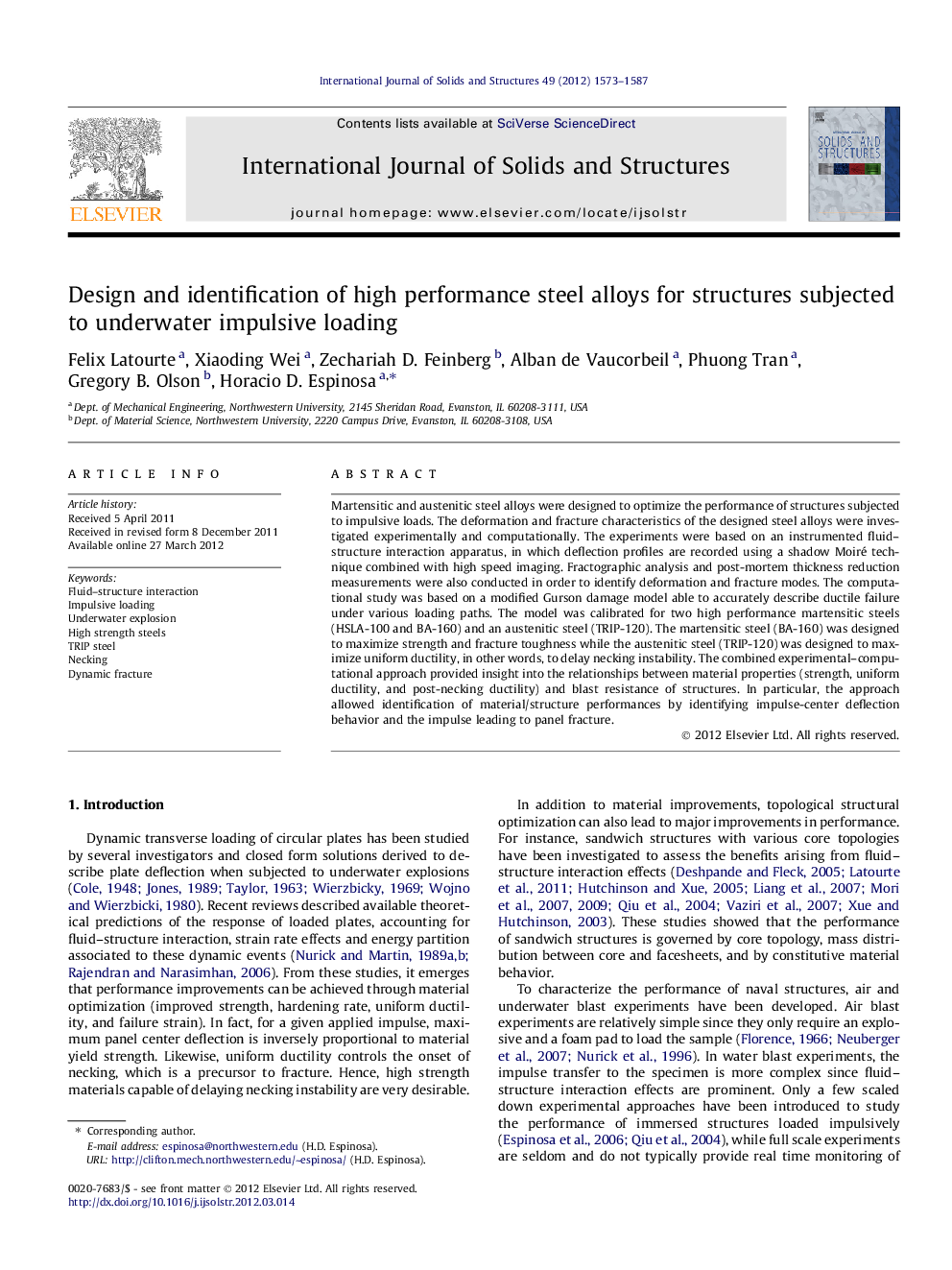| Article ID | Journal | Published Year | Pages | File Type |
|---|---|---|---|---|
| 278212 | International Journal of Solids and Structures | 2012 | 15 Pages |
Martensitic and austenitic steel alloys were designed to optimize the performance of structures subjected to impulsive loads. The deformation and fracture characteristics of the designed steel alloys were investigated experimentally and computationally. The experiments were based on an instrumented fluid–structure interaction apparatus, in which deflection profiles are recorded using a shadow Moiré technique combined with high speed imaging. Fractographic analysis and post-mortem thickness reduction measurements were also conducted in order to identify deformation and fracture modes. The computational study was based on a modified Gurson damage model able to accurately describe ductile failure under various loading paths. The model was calibrated for two high performance martensitic steels (HSLA-100 and BA-160) and an austenitic steel (TRIP-120). The martensitic steel (BA-160) was designed to maximize strength and fracture toughness while the austenitic steel (TRIP-120) was designed to maximize uniform ductility, in other words, to delay necking instability. The combined experimental–computational approach provided insight into the relationships between material properties (strength, uniform ductility, and post-necking ductility) and blast resistance of structures. In particular, the approach allowed identification of material/structure performances by identifying impulse-center deflection behavior and the impulse leading to panel fracture.
